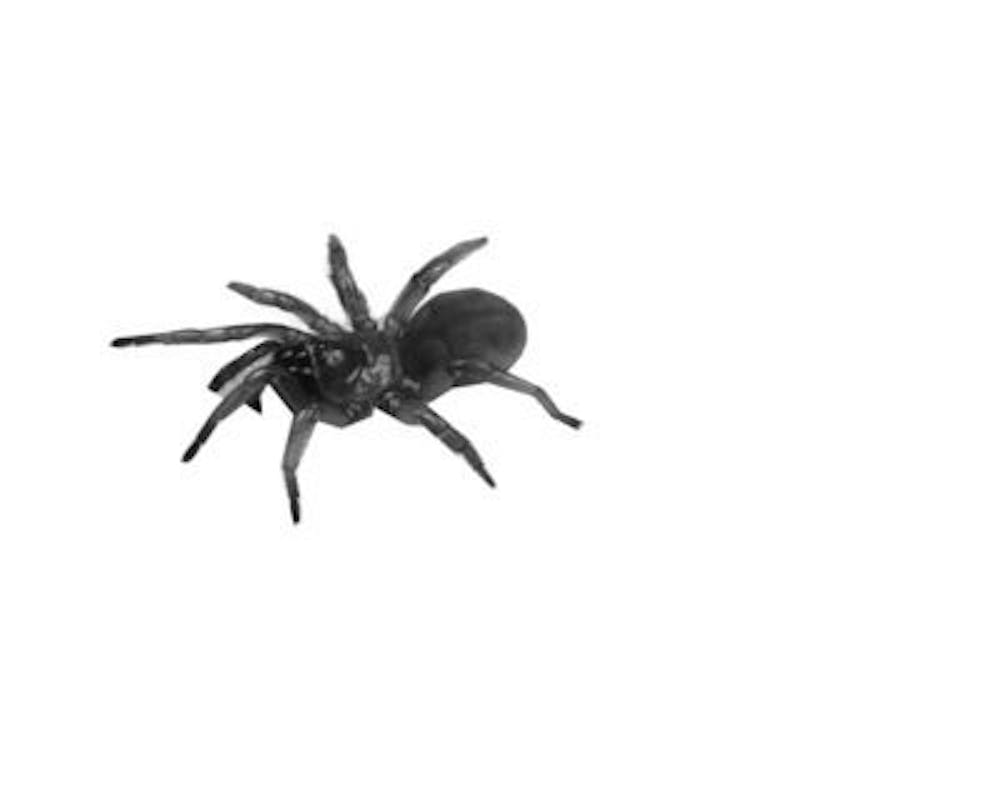It didn't take a bite from a radioactive spider to give Jason Bond, biological sciences professor and director of the Auburn University Museum of Natural History, the superpowers of thorough research, diligent work ethic and speedy fieldwork results.
Since his arrival at Auburn in December, Bond led a research team through the process of classifying a new arachnid species found in his own neighborhood by fellow researcher Charles Ray.
Myrmekiaphila tigris, also known as the Auburn Tiger Trapdoor Spider, was recently discovered in the community of Grove Hill in Auburn.
This May, open access journal "Zookeys" published the study on Myrmekiaphila tigris.
The investigation began after Ray brought Bond an unfamiliar spider specimen to examine.
After careful inspection, this spider was determined to be different from others of its kind due to its pedipalps, which is how male spiders transfer sperm.
This specific anatomical structure varies between spider species and is used for identification.
The research team continued to harvest spiders.
According to Bond, several males were found in a swimming pool in Grove Hill, but the females were harder to locate because female trapdoor spiders do not leave their subterranean burrows.
Instead, as their name reflects, they wait for their prey.
Chris Hamilton and Nicole Harrison, both Auburn graduate students, assisted in finding burrows and obtaining female specimens.
By February, the team had described both sexes and completed the genetic component in their research analysis.
After finishing the documentation in April, the work was peer reviewed before its publication in May, a process totaling about five months.
According to Bond, how structures evolve and why species are different explains the female spiders' selective mating process.
"The females don't look very different," Bond said. "It's the males that are quite distinct."
He compares the process to birds, saying that the more brightly colored male is most often the one that females mate with because he is perceived as being of higher quality, meaning his genes are superior to his other less vibrantly feathered competitors.
Females select their mate based on not only the physical attributes that make the males more attractive, but ensure the successful continuation of these superior traits into the genetic code of their offspring.
"Females are driving these differences," Bond said. "Male genital structures are evolving very rapidly due to the process of speciation and the consequence of females selecting these traits."
Bond explained that while the spider is not harmful to humans, its role as a predator to other creatures is necessary.
"Spiders are what we generally term an essential ecosystem service," Bond said. "If you eliminated all spiders we would very quickly be overrun with all sorts of insects and other things we probably wouldn't find particularly pleasant."
According to the 2011 State of Observed Species Report released Jan. 18 by the International Institute for Species Exploration at Arizona State University, there were 19,232 recently discovered species in the latest calendar year accounted for.
However, Bond said it is rare to find a new species in an area like Auburn that has "been worked over pretty well, where there's a lot of people living."
Bond said 1.8 million species have been named, but there are still estimates of 30 million species left undiscovered.
"Humans are destroying a lot of biodiversity and species from habitat destruction and a lack of a taxonomic education," Bond said. "There just aren't a lot of folks who are trained these days to describe new species."
Do you like this story? The Plainsman doesn't accept money from tuition or student fees, and we don't charge a subscription fee. But you can donate to support The Plainsman.




